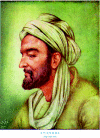Tradition and perspectives of arab herbal medicine: a review
- PMID: 16322804
- PMCID: PMC1297506
- DOI: 10.1093/ecam/neh133
Tradition and perspectives of arab herbal medicine: a review
Abstract
Complementary and Alternative Medicine (CAM), including herbal medicine, are popular in the general population worldwide. Parallel to the increasing interest in 'modern' CAM therapies and the historical importance of Arab medicine, there is also a similar trend in research activities dealing with the efficacy and safety of medicinal plants in our region. Historical and current studies and surveys indicate that the Eastern region of the Mediterranean has been distinguished throughout the generations with a rich inventory of natural medicinal herbs. It is well documented that indigenous Arab medicine has contributed greatly to the development of modern medicine in Europe and remains one of the closest forms of original European medicine. The rapid increase in consumption of herbal remedies worldwide has been stimulated by several factors, including the notion that all herbal products are safe and effective. This article presents a systematic review on traditional Arab medicine including historical background, medical innovations introduced by Arab physicians in the field of safety and efficacy of herbal medicine and a state-of-the-art description of traditional Arab herbal medicine in the Mediterranean region.
Figures


References
-
- Solecki R. Shanidar IV, a Neanderthal flower burial in Northern Iraq. Science. 1975;190:880–1.
-
- Bensky D, Gamble A. Chinese Herbal Medicine: Materia Medica. Revised edition. Seattle, WA: Eastland Press, Inc.; 1993. pp. 13–7.
LinkOut - more resources
Full Text Sources
Other Literature Sources

